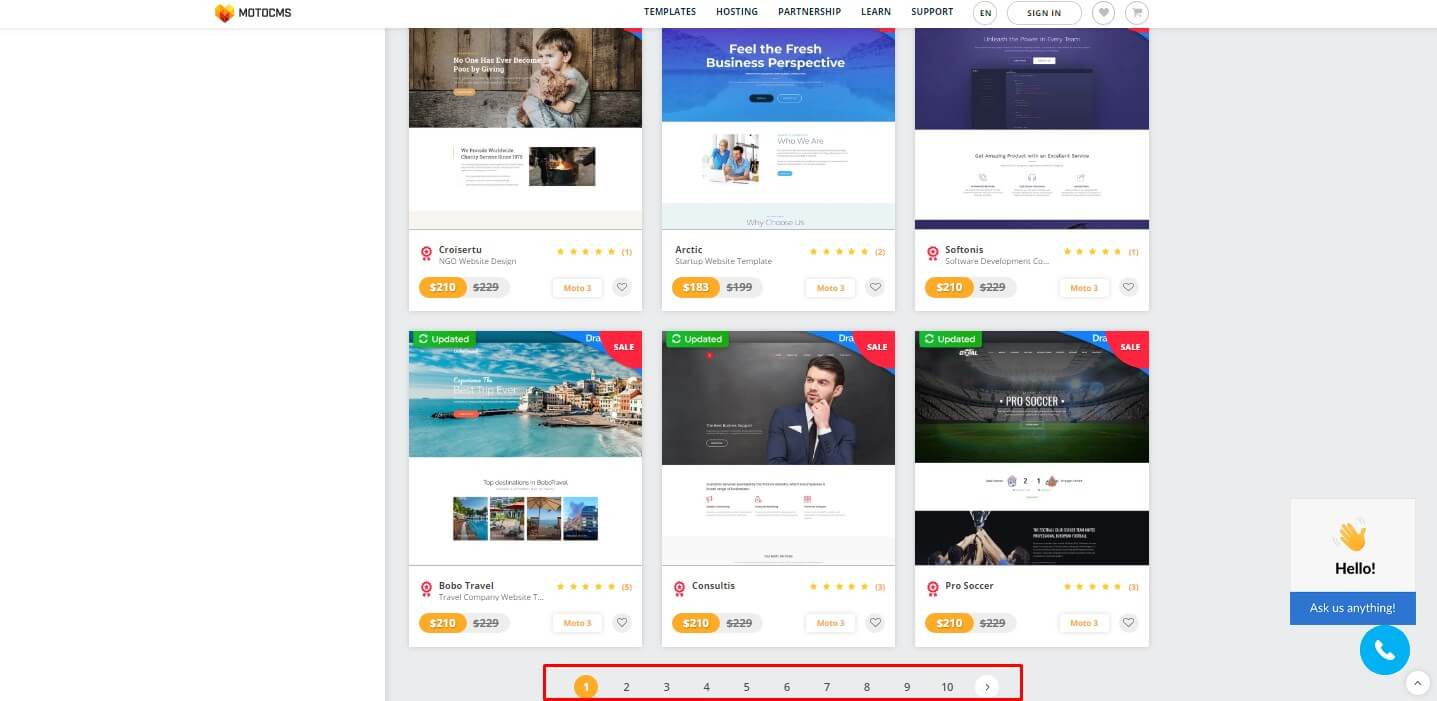Pagination and SEO: Why Do You Need It and How to Avoid Common Mistakes
How to
If you are reading this post, you probably have a website with a large number of pages that have to be optimized. Either it's a personal blog, or an Ecommerce website, in most of the cases pagination is a must. However, pagination can become the worst enemy and leave no stone unturned in destroying your ranking and organic traffic if you implement it wrong. This post will help you get in good with the right SEO practices. Let's get it started!
1. What Are Pagination and Pagination Attributes
Let's start with a short overview of some basic terms and concepts to give you a better understanding and ensure that you have enough background information to proceed with the rest of the post.
Pagination is a term which defines the process of a sequential division of the content into separate pages. So if you stumble upon pagination, you have to know about pagination attributes.
Pagination attributes are additional attributes rel="next" and rel="prev", that tell search engines which page is previous or next to the requested one. They make it clear for search engines that pages are logically sequenced.
They are set in the <head> section of each page. The first page should have only rel="next" (pointing to the next page), the following pages should include both rel="prev" and rel="next". The last page in the chain should only have rel="prev".
Read more → SEO internal linking
2. Examples of Paginated Content
Paginated content exists throughout the web, let's look at the most common cases.
2.1. Paginated Articles
The first example is a paginated article. Let's say that you are visiting your favorite online news magazine, and you see a huge piece of a text which is subdivided into separate pages for your convenience. In such case, you get a pagination which replaces an infinite scrolling and helps to load the pages faster.
2.2. Paginated Product Catalogs
Another example of website pagination is its use for paginated product listings. Like what you would see on any Ecommerce website. Let's take a website builder online catalog as an example.

It would be convenient to place all the products of the same category on a single page but take a lot of loading time. For that reason, they have subdivided the products into equal parts and presented them on component pages.
3. Why Do You Need Pagination
So we can come up with the idea that pagination is useful and has plenty of advantages:
- Users do not get lost and can concentrate on a particular amount of content. Hierarchy and paginated structure improve the readability score of the content.
- The pages load faster due to the less content on each of them.
- Each page has a separate URL which is easy to refer.
- It positively affects website SEO because it reduces the likelihood of duplicate pages appearing (usually paginated pages have identical contents and meta tags), and crawlers can understand the structure of paginated pages way better.
However, it can be not as simple as it seems. That's why I suggest you check some tips on pagination implementation and possible consequences of their incorrect setup.
4. Pagination Tips
It is time to proceed with some useful tips for its appropriate implementation. Let's look through some of the most widely used solutions.
4.1. Don't Place Paginated Pages in the XML Sitemap
You should include only those pages in your XML sitemap that you want to rank. So paginated pages usually are not such pages. But if you have implemented pagination using 'View All' pages, not the rel="next" and rel="prev" attributes, you should include them in your XML sitemap.
4.2. Common Tips for Product Cards
If you have an Ecommerce website with a lot of product cards, follow these recommendations:
- texts placed on the first page should not be duplicated on the pagination pages,
- uniquely identify the pagination page headers (title) by adding the page number to them, description shouldn't be used on the these pages.
4.3. Keep the Sequence of Pages
To avoid duplicate content be careful with the sequence of pages. If you break it, search engines will likely index and return all pages.
As for example, if you have forgotten the rel="prev" from page 5 to page 4, it'll break the sequence of pages.
5. Most Common Pagination Issues
What are the possible side effects of improper pagination? There are several common issues I would like to highlight.
5.1. Disallow in Robots.txt File
If your website paginated pages' URLs are built like this example https://www.website.com/page/2/, you can add the following rule to the robot.txt file of your website and give an instruction to search engine bots not to visit the pages containing this part in their URLs: Disallow: /page/.
It leaves no chances for the paginated pages to appear in the search results. The rule is applied to all paginated pages, be it a catalog or a blog. Sounds bad, doesn't it? So think twice before disallowing paginated pages in robots.txt.
5.2. Placing Pagination Attributes in the <body> Section
rel="next" and rel="prev" attributes must be placed in the <head> section of the webpage, but people frequently place them in the <body> part. Keep in mind that this is incorrect.
5.3. Set up Canonical Attributes to the First Page
A lot of SEOs keep setting up canonicals from paginated pages to the first page in the sequence. According to Google, this tactic isn't recommended.
5.4. Noindex for the Paginated Pages
You may think that the easiest way to forget about all possible duplicate content issues related to the catalog pages is to exclude all paginated pages (starting from the second one) from the indexation. So this is an arguable point. You can dig into this question and decide do you need noindex or not in SEO guide to Google webmaster recommendations for pagination by Moz.
7. In a Nutshell
Hopefully, this article was useful for all those interested in the pagination and SEO relations. As you can see, pagination is not a simple thing. However, if you set it right, it will work for your business performance and bring your user experience to the top. Here are the main points of the post:
- Hierarchy and paginated structure improve the readability of the content.
- Don't place paginated pages in the XML sitemap.
- Keep the sequence of pages.
- Don't Disallow paginated pages in the Robots.txt File.
- Place rel="next" and rel="prev" attributes only in the section of the webpage.
- Setting up Canonical attributes to the first page is an outdated tactic which is not recommended by Google.
Improve your website, use the right pagination strategy, and don't hesitate to comment below if you have something to share with the readers. Stay strong, and keep growing!



